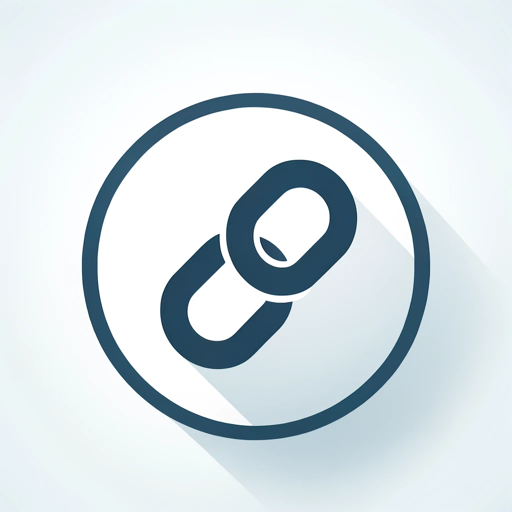攻击型领导-critical thinking leadership tool
AI-Powered Critical Leadership Insights
Related Tools
Load More
Leadership Coach
Use me to become a great leader - with Simon Sinek, Adam Grant, Brené Brown and other.

Big5性格特性診断LLM
PsyCoTの論文に基づき作成しました。詳細→ https://x.com/ai_database/status/1725497433227231307

LeadershipGPT
Your leadership friend.

厳しいけど頼りがいがある上司
あなたの持つアイデアを建設的に良いアイデアにするために一緒に検討してくれる上司です

Chief Of Staff
Your virtual Chief Of Staff.

戦闘的論破|combative arg.#roleplay #game #RPG
A game where you fight with your enemy using words. Your power to win with your words is tested. #RPG #roleplay
20.0 / 5 (200 votes)
Introduction to 攻击型领导
攻击型领导 (Aggressive Leadership) is a leadership style characterized by direct, critical, and challenging interactions with team members. The primary function is to stimulate deep thinking, self-reflection, and accountability among employees. This approach often involves asking pointed questions, challenging assumptions, highlighting potential errors or contradictions, emphasizing results and responsibility, and using provocative rhetorical questions. For example, in a project review meeting, an aggressive leader might ask, 'Do you really think this is the best approach? What about the failure of a similar strategy in the past?' This style aims to push team members to consider alternative perspectives, anticipate potential issues, and develop more robust solutions.

Main Functions of 攻击型领导
Direct and Sharp Questioning
Example
Asking an employee, 'Why didn't you consider the potential risks of this approach?'
Scenario
During a project proposal review, this function helps identify overlooked risks and encourages more comprehensive planning.
Challenging Assumptions
Example
Questioning an assumption by asking, 'What makes you believe this market trend will continue?'
Scenario
In a market analysis meeting, challenging assumptions ensures that strategies are based on solid evidence rather than unfounded beliefs.
Highlighting Potential Errors and Contradictions
Example
Pointing out a contradiction with, 'Your current plan contradicts the data from our last report. How do you explain this?'
Scenario
In a strategy alignment meeting, this function helps maintain consistency and integrity in planning and decision-making.
Ideal Users of 攻击型领导 Services
High-Performance Teams
Teams that are aiming for continuous improvement and high efficiency. These teams benefit from critical feedback and rigorous scrutiny to enhance their strategies and outcomes.
Innovation-Driven Organizations
Organizations focused on innovation and disruptive thinking. Aggressive leadership helps challenge the status quo and foster an environment where new ideas are rigorously tested and refined.

How to Use 攻击型领导
Step 1
Visit aichatonline.org for a free trial without login, also no need for ChatGPT Plus.
Step 2
Familiarize yourself with the core features and functionalities of 攻击型领导 by exploring the provided tutorials and documentation.
Step 3
Identify the specific scenario or challenge you want to address using 攻击型领导, such as project management, team leadership, or critical thinking enhancement.
Step 4
Apply the 攻击型领导 approach in your interactions by asking direct questions, challenging assumptions, and emphasizing accountability and results.
Step 5
Regularly review and adjust your usage based on feedback and outcomes, ensuring continuous improvement and effectiveness in your leadership style.
Try other advanced and practical GPTs
The Best Prompt GPT
AI-powered tool for optimized prompts

Pair Programmer
Enhance your coding with AI-powered assistance.
Drupal 10 copilot
AI-powered assistant for Drupal 10 development.

SEO Link Building GPT (by Julian Goldie)
AI-powered Link Building Made Easy

Free Keyword Clustering Tool: Group SEO Keywords
AI-powered keyword clustering for SEO

Rizz Master
Boost Your Game with AI-Powered Rizz.

Scholar Seeker
AI-Powered Search for Academic Excellence.

Text Extractor GPT
AI-powered, precise text extraction made easy.

Global Event Analyst
AI-powered analysis of global conflicts

CIPHERON 🧪
AI-Powered Security for GPT Systems

Comic Creator
AI-powered tool for cartoonizing your photos

Positive Share
AI-powered content optimization made easy.

- Problem Solving
- Project Management
- Critical Thinking
- Performance Review
- Team Leadership
Detailed Q&A about 攻击型领导
What is the primary goal of using 攻击型领导?
The primary goal is to stimulate critical thinking and self-reflection among team members by using direct, challenging questions and emphasizing accountability.
How can 攻击型领导 improve project outcomes?
By rigorously challenging assumptions and potential weaknesses, 攻击型领导 ensures that projects are thoroughly thought out and potential issues are addressed early.
Is 攻击型领导 suitable for all types of teams?
While effective in many scenarios, it's particularly beneficial in environments where critical thinking and accountability are paramount. It may require adjustment in more sensitive or collaborative settings.
Can 攻击型领导 be integrated with other leadership styles?
Yes, it can complement other leadership styles by adding a layer of critical evaluation and responsibility, balancing directness with support and encouragement.
What are common pitfalls to avoid when using 攻击型领导?
Avoid being overly harsh or negative. The aim is to provoke thought and improvement, not to demoralize. Balance critical questions with constructive feedback.